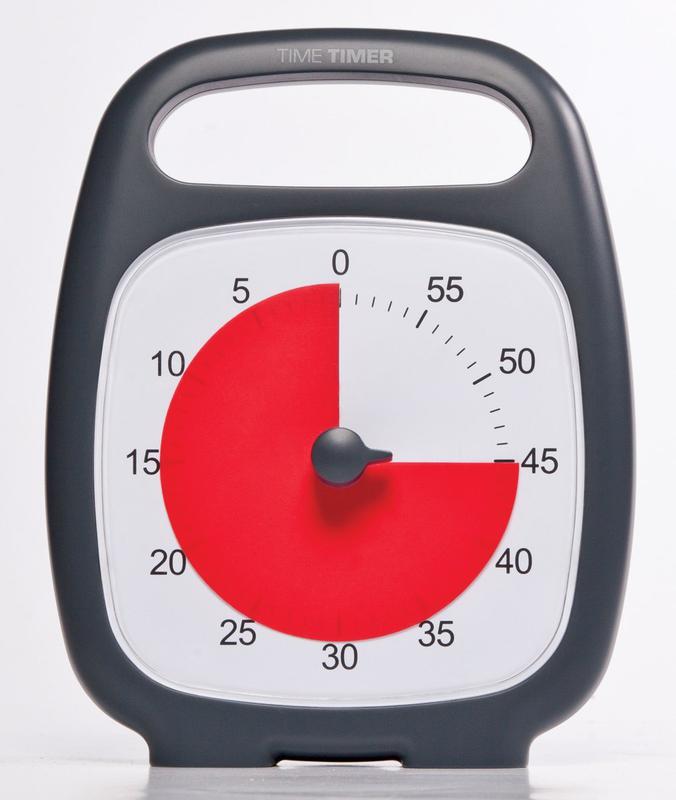© Copyright 2012 Red Circle Rainbow. All Rights Reserved.
Transitions
Transitions
Multitasking: It's Not What You Think.
by: Carol Jimenez
Did you know that there is no such thing as multitasking? It's true. In order to go from one activity to another, you have to switch your focus completely from one activity to the other. Someone who is good at 'multitasking' is actually decreasing their productivity. So, don't feel bad if you prefer to do one thing at a time, and are no good at "multitasking". It just means that you are more productive than someone doing a million things all at the same time.
Compelling Research
A summary of research examining multitasking on the American Psychological Association's web site describes how so-called multitasking is neither effective nor efficient. These findings have demonstrated that when you shift focus from one task to another, that transition is neither fast nor smooth. Instead, there is a lag time during which your brain must yank itself from the initial task and then glom onto the new task. This shift, though it feels instantaneous, takes time. In fact, up to 40 percent more time than single tasking - especially for complex tasks
So why do I bring this up when writing about transitions? I want you to keep this in mind when you are working with your child. Think about the fact that your child's attention has to switch from one thing to another. How many things are you requesting of your child at the same time, "Sit up. Fix your legs. Look over here. Quiet mouth. Quiet hands. Say 'Dog' ". Yikes! I didn't realize I was asking so much.
Before any activity, consider what you want your child's focus to be on? Which of the items in the previous list is the goal of the interaction? If it is saying 'Dog', then make it clear to your child that is the demand. Use supports. Put it on your schedule. Below is a list of things you can do to make transitions easier.
Transition List - Things you can do to make transitions easier.
Give clear instructions.
Be clear about what you want your child to do, and ask for one thing at a time. Use visual supports.
Prepare - Use a schedule.
A schedule allows the child to mentally prepare, whether for a preferred activity or a non-preferred activity. Think about how long it takes you to mentally prepare to go to the doctor or the dentist. You know it's coming a month in advance. Give your child the same courtesy. It is not a good idea to surprise a child with a non-preferred activity. It is much better to give them plenty of time to mentally prepare. Doing so will also instill trust in you.
Don't surprise their child with negative experiences like immunization shots and dental visits. The rationale is that the negative experience (screaming, crying, kicking, etc.) will be shortened by doing so. While this may be true for the parent's experience, it is not true for the child. Such "surprise" experiences do not allow for mental preparation and undermine the child's trust in you. "Surprises" can further add to a daily level of anxiety from not knowing what is coming. This is true for all children. The more information you give them, the more they will trust you.
Determine how long the activity will last.
Use a timer or countdown to let the child know when the activity will end. Be rigidly consistent. If there is flexibility, inform your child that there is flexibility ahead of time. "We will do this for 5,10, or 15 minutes." This still counts as being consistent, because the flexibility is identified in advance and is part of the plan.
Note: When counting, always count down and not up. Up can keep going. Down always ends at zero. Include zero at the end of your countdown.
Ask yourself the following questions:
What, specifically, am I asking my child to do?
Do I have a non-verbal way to communicate what I want my child to do? Remember, visuals are a permanent, authoritative reminder. Verbal words are vapor that dissipate into the atmosphere and are forgotten. AKA: "Out of sight, out of mind."
How many times, or how long do I want her to do it?
How am I going to end this activity? When the timer goes off? When the child has repeated the request 10 times? Be sure to communicate how the activity will end.
What is the payoff (motivation) for my child to move on to the next activity?
Big Note: A successful transition is one that happens at the end of an activity, not the beginning.
 | ||||||
Click on the image below to download these icons.
Website Directory - Quick Links
Although the website store is now closed, Video Countdown DVDs are still available for purchase.








